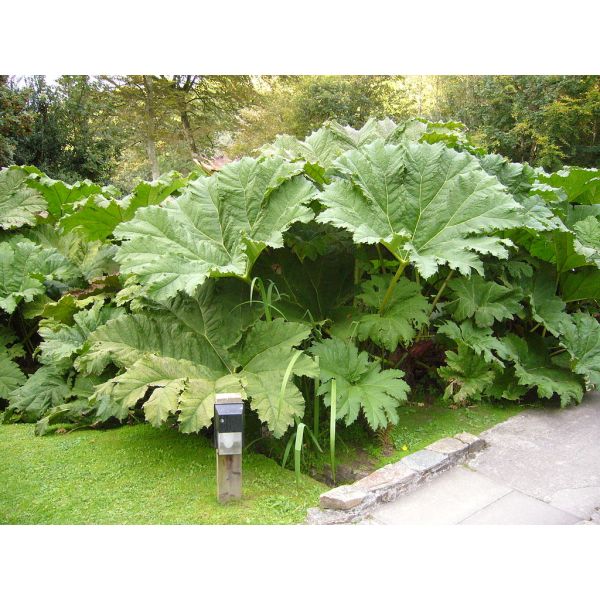Gunnera Manicata Seeds (Dinosaur Food)
Gunnera Manicata Seeds (Dinosaur Food)
Giant leaves ! Can be kept in pots for a few years, but of course won't grow as large as they would in the ground.

Delivery
All orders shipped with UPS Express.
Always free shipping for orders over US $250.
All orders are shipped with a UPS tracking number.
Returns
Items returned within 14 days of their original shipment date in same as new condition will be eligible for a full refund or store credit.
Refunds will be charged back to the original form of payment used for purchase.
Customer is responsible for shipping charges when making returns and shipping/handling fees of original purchase is non-refundable.
All sale items are final purchases.
Help
Give us a shout if you have any other questions and/or concerns.
Email: contact@domain.com
Phone: +1 (23) 456 789
Availability: Out of stock
SKU
Gunnera Manicata
Gunnera manicata, commonly named, Dinosaur food, is one of the biggest and most spectacular, architectural, herbaceous plants, commonly thought of as Giant rhubarb. This perennial can height 1,80m-2,50m (6-8 feet) tall and spread over 2,50m-3,00m (8-10 feet). Gunnera manicata is native to the cloud forests of the Andes, mainly places like Chile, Costa Rica, and Columbia. They can be kept in pots for a few years, but of course won't grow as large as they would in the ground. They can be kept growing all year in a greenhouse in which it doesn't freeze.
These magnificent, big, bold perennials develop enormous leaves that can grow 1,20m-2,50m (4-8 feet) across, making this one of the world's largest herbaceous plants. Although these dimensions are seldom see in cultivation, 1,20m (4') leaves and plants 2,50m (8') high and 3,50m (12') wide are not uncommon. Growth is fast if the plant is happy. The plant has spines or sharp edges; use extreme caution when handling. Where Winters are mild, the leaves will last more than 1 year but in colder climates the leaves die-back to the roots in Winter. During the Summer statuesque spikes of tiny reddish-green flowers appear.
Hardiness zones 7-10, (-15øC/5øF, 1øC/35øF) in Winter. Gunneras are considered hardy to zone 7. The leaves will die back in zone 7 and 8 Winters, and will push up through the mulch in the Spring, and grow larger than in the previous year. Protect the plants from frosts during Winter.
Plant out in moist, loamy mildly acidic soil and part shade. Of course, such a large plant needs lots of nutrients, so feed it in the growing season. Best in cool Summer areas, it is rarely successful in hot or dry climates.
Gunneras grow in specific places in the cloud forests, namely seepage areas where there is a constant, unlimited supply of water. Look at those leaves and imagine how much water they can transpire. That means a lot has to be coming in at the roots. These huge leaves act as funnels, bogarting all the rain and funneling it right to the middle of the plant. They grow well next to streams and natural ponds, where their roots can get right into boggy soil, or else they need a lot of watering throughout the dry months.
| Common name | Dinosaur Food |
|---|---|
| Species | Gunnera manicata |
| Germination | Sow at 2mm (1/16) inch in pots of good seed compost in a warm place to maintain an optimum temperature of 25-27øC (75-80øF). The seeds can be slow to germinate. Keep the seed compost very moist, but never saturated. Seed will germinate in 30 to 90 days, it can be a little more, don't give up. Using bottom-heat and a humidity dome is highly recommended. |
| Scarification / Stratification | If your home is on the low side of 21§C (70§F), your seeds will benefit from bottom heat. Give warmth from underneath to stimulate early growth, and to help seeds to germinate. The ideal situation is to maintain the soil temperature at 21§C (70§F). For this, you use an electric soil warming cable kit, or a heating mat that goes under your flats; or any other source of heat. With the proper temperature, you will cut by 2 or 3 the germination time. |
| Price View | Price Range |

